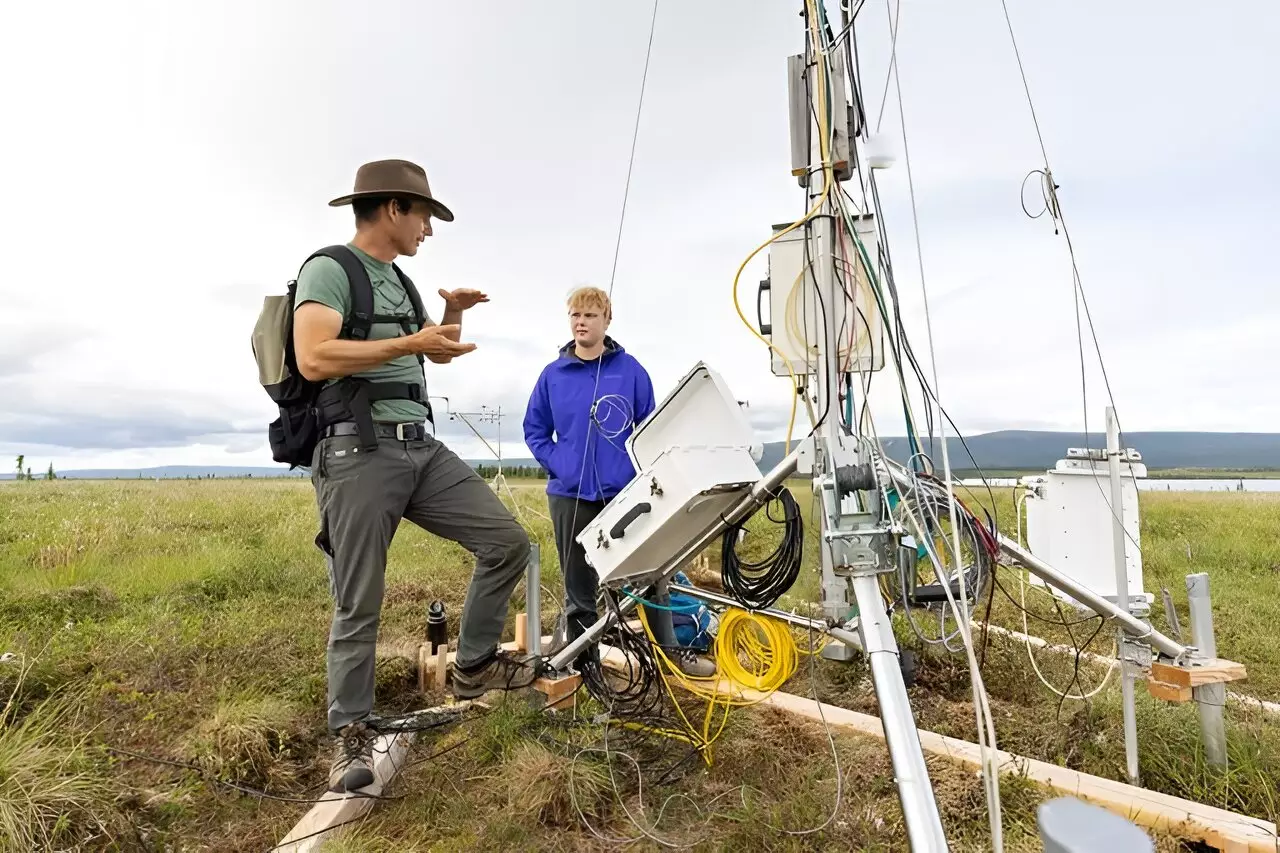The Arctic, often perceived as a distant and desolate frontier, holds immense significance for the global climate. The northern circumpolar permafrost region, which includes not only the beautiful tundra but also vast stretches of boreal forest, accounts for only 15% of the Earth’s soil area but astonishingly stores about one-third of the world’s soil organic carbon. This essential ecosystem acts as a vast carbon reservoir, intricately connected to the global carbon cycle. The processes governing this delicate balance are vital to our understanding of future climate scenarios. Recent studies have begun to illuminate the complex biological interactions taking place in these warming regions, underscoring their role in the ongoing climate crisis.
Understanding Carbon Dynamics
Carbon, in its many forms, is constantly cycled through the Earth’s ecosystems. In simpler terms, this cycle involves plant uptake during photosynthesis and the release of carbon dioxide through processes such as decomposition or ecosystem respiration. As temperatures rise due to climate change, the Arctic permafrost is warming at alarming rates—three to four times faster than the global average. This raises pressing questions about the implications of accelerated carbon cycling and respiration rates within these ecosystems. The consequences of increased carbon emissions from permafrost could contribute an estimated 10% to 20% of future greenhouse gas emissions, a staggering figure that warrants urgent attention.
As researchers from various parts of the world collaborate through the Permafrost Carbon Network, the intricate effects of temperature on carbon dynamics are coming into sharper focus. For instance, significant research has shown that as summer temperatures rise, non-permafrost systems tend to benefit from enhanced plant growth, which leads to higher carbon storage. In stark contrast, the permafrost regions experience substantial losses of carbon during fall and winter, negating any summertime gains in uptake.
Revelations from Groundbreaking Studies
Ted Schuur and his team have conducted pivotal studies that unravel the complexities of carbon cycling in permafrost ecosystems. One noteworthy study published in *Nature Climate Change* analyzed decades of carbon dioxide flux data from 70 different sites worldwide. Interestingly, their findings suggest that the winter and fall emissions from permafrost regions are now outpacing the summertime carbon absorption. Co-author Sue Natali, a leading scientist in this field, articulates the implications clearly: “We’re seeing permafrost areas release more carbon in the fall and early winter than they used to.” Such revelations significantly reshape our understanding of carbon dynamics in a warming world.
Moreover, another study published in *Nature* employed controlled experiments using miniature greenhouses to simulate warming conditions. This study unveiled a stark reality; a mere 1.4°C increase in air temperature, along with a mild 0.4°C rise in soil temperature, led to a 30% increase in ecosystem respiration. This emphasizes the sensitive balance of these ecosystems, where slight changes in temperature can lead to disproportionate outcomes.
The Role of Environmental Variables
One of the striking insights from these studies is the role of local environmental factors, such as nutrient availability and water supply, on carbon uptake and respiration rates. These variables contribute to regional differences in how ecosystems respond to warming. Understanding these subtle, but impactful, differences is crucial for predicting future carbon dynamics in Arctic environments.
As the climate continues to change, the feedback loops established by biogeochemical responses will likely amplify overall warming. The data generated from these long-term studies and experiments serve as both a wake-up call and a guide for global policymakers. The Paris Agreement emerged with targets to curb emissions, but how effective are these goals if future permafrost emissions are not adequately quantified and addressed?
Implications for Global Policy and Future Research
The interconnectedness of global carbon emissions makes it essential that the scientific community and policymakers pay close attention to the manifestations of climate change at the poles. Researchers emphasize that unless we factor in the growing emissions from thawing permafrost in our climate action strategies, achieving the objectives of the Paris Agreement is not merely ambitious; it may be an unattainable goal. Schuur, alongside his collaborators, advocates for urgent action to integrate this knowledge into comprehensive climate policies.
In parallel with these challenges, geopolitical issues, such as the recent invasion of Ukraine, present additional obstacles to collaborative research efforts. Complications arising from such conflicts can hinder access to critical permafrost monitoring sites, thereby hampering our understanding of these ecosystems’ dynamics. Despite these challenges, as researchers continue to collect and analyze data, they elevate our collective awareness regarding the Arctic’s role in climate change.
The research efforts surrounding permafrost ecosystems are paramount not only for scientific understanding but also for informing public policy and response to this global crisis. The understanding of how permafrost thawing contributes to climate change will shape the trajectory of climate action in the coming decades, emphasizing the need for a comprehensive approach to mitigate its impacts.


Leave a Reply